This was one of the last photos I took of any plant in my Pennsylvania garden, before moving to Texas. Looks to be in caryophyllaceae, but it doesn't match any of the plants I had on record as growing in my rock garden - it may have been grown from mislabeled seed. I had various dianthus and saponarias in that general area. Seed almost certainly came from NARGS exchange, since that's where the bulk of my rock garden plants came from. Any ideas?
Comments
Hi, Fermi,
Hi, Fermi,
It certainly looks like a Saponaria sp..
The similar one I have (though the foliage on yours looks like it might be longer?) which was ID'd as Saponaria x suendermannii seems to be a hybrid (as it's not a valid species name). I've never been able to collect seeds from it and I suspect it may be sterile(?).
Looking at this again, Fermi,
Looking at this again, Fermi, and comparing your plant to my pics of what was said to be S. x suendermannii, I see some differences. Not really the foliage length, perhaps, but the dark stems and something about the habit - the way the flowering stems are held - are different.
Here's my plant of S. x suendermannii:
Here's another plant that I think is more like yours - quite likely the same thing? I had it labelled as Saponaria "grandiflora" but that's not a valid species name so I don't know where I got that from! This one has the same dark, upright flowering stems as yours. I think it may be Saponaria caespitosa, since I have another plant in my records labelled as that which looks very similar:
Here's the other plant from my records which was labelled as Saponaria caespitosa:
I'll look and see if I have any references that describe S. caespitosa (or similar possibilities) but anyway, I think these last two photos I just added look much more like your plant, particularly the first which seems to have slightly longer foliage.
Hi Lori,
Hi Lori,
Thanks for your responses. The plant is (or rather, was) actually mine, Fermi just posted the first reply. I looked at a lot of online images of S. c(a)espitosa, and all of them have shorter leaves, not nearly as grassy as those of the plant pictured in my first post. The pic of S. suendermannii looks closer in the foliage department, although I agree that the posture of the flowers is different. So perhaps I'll never figure out what it was that I had growing in my ex-garden - just glad I saw it bloom once before abandoning it :-)
Rob
Sorry, Rob - I hadn't noticed
Sorry, Rob - I hadn't noticed that it was your posting, not Fermi's!
Please note also the dark stems on your plant (and on Saponaria caespitosa) that are not present on S. x suendermannii.
Too bad it's difficult to find detailed descriptions of European plants, or so I find, anyway.
The AGS description of S. caespitosa says flowers are in 3's (but gives no indication of range of leaf length). The description in The European Garden Flora, Vol. 11, says flowers are "few" and also that there are 2 styles (vs. 3 or "often" 3 in the sp. it's being differentiated from in the key... which is S. pumilio, with which it could not be mistaken anyway). Style count may be something to look at if you have close photos? Your plant has more than 3 flowers, if that's a reliable differentiation.
EDIT: But... Looking at the AGS entry again, I'm not sure I'd rely on "3" flowers being diagnostic, since the illustration for S. caespitosa at the same site shows >3! See below:
http://encyclopaedia.alpinegardensociety.net/plants/Saponaria
Here's another possibility
Here's another possibility perhaps - S. x boissieri, a hybrid of S. caespitosa (from which it would appear to get the dark stems) and S. ocymoides.
http://encyclopaedia.alpinegardensociety.net/plants/Saponaria/boissieri
http://dbiodbs.units.it/carso/chiavi_pub26?spez=16646
S. boissieri looks like the
S. boissieri looks like the best fit of the bunch. I did try to start it from seed once, but my records of where I placed it are murky. Thanks for the help!

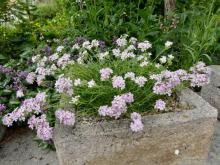
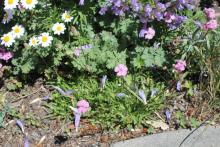
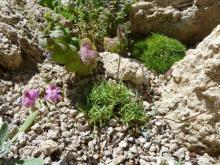
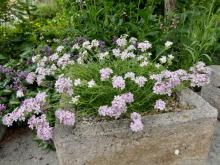

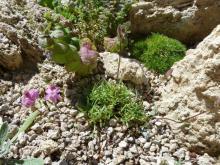
Lori had a similar plant and posted pics on the SRGC Forum:
http://www.srgc.net/forum/index.php?topic=3150.0
The suggestion was Saponaria suendermannii
cheers
fermi